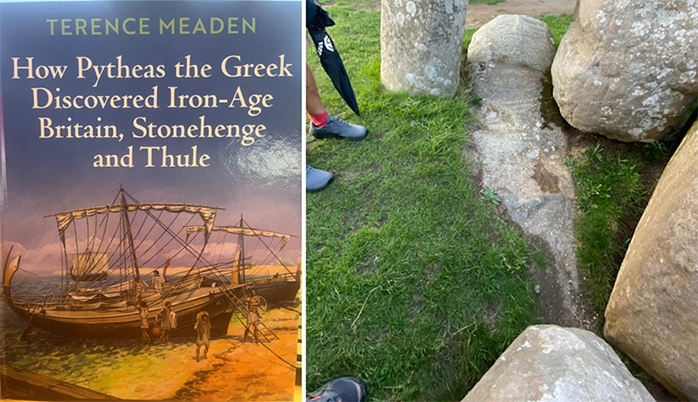A NEW book by a professor who has extensively studied Stonehenge and other megalithic sites reveals how the stone circle in Wiltshire was used as a fully functioning temple to worship the sun – and not a place for the dead.
‘How Pytheas The Greek Discovered Iron-Age Britain, Stonehenge And Thule’ has been written by professor Terence Meaden.
It centres over the Greek scientific adventurer Pytheas of Massalia who was the first literate explorer to meet British countryfolk and write of their customs in 325 BC.
His ambitious voyage saw him battle stormy conditions before he eventually ventured to Stonehenge where he understood the stone circle’s purpose as a temple to the sun.
Professor Meaden said: “We learnt at school that recorded British history began with the writings of the literate Romans. This is no longer true. The intellectual Pytheas wrote about facts of life in Iron Age Britain in 325 BC.
READ MORE: Wiltshire Council branded ‘uncaring’ as Stonehenge byway closure blocked disabled access
READ MORE: 25 years since the collapse of Silbury Hill: the hole story
“Pytheas came from a land of ‘temples of the sun-god Apollo’. He recognised Stonehenge for what it is and said so.
“This ends the 400 years of uncertainty among those academics who say that Stonehenge was built as a place for the dead or definitely not a place of worship to the sun but instead only built to have solar alignments.”
Pytheas described the Stonehenge priesthood in enough detail as to indicate that the monument was still in use when he visited.
Professor Meaden said he spotted a phallic bluestone at the site which he said is a powerful male fertility image positioned to accompany the feminine-symbolic altar stone.
“Being a temple, there would be icons to the divinity. It is I who discovered the phallic centrepiece which everyone in four centuries had missed spotting,” he said.
He added that the alignment of the heel stone, positioned so as so line up with the sunrise on the summer solstice, ensures that after sunrise it would cast a phallic shadow in to the female symbolic monument to unite with the symbolically-female altar stone.
“The icons served as proxies for the gods, by which they visibly actualised the much-loved myth of ‘The Marriage of the Gods’ at the solstice,” he added.
“This relationship has similarly been proved for dozens of stone circles across England, Ireland and Scotland.”
How Pytheas The Greek Discovered Iron-Age Britain, Stonehenge And Thule can be bought online.











Leave a Reply